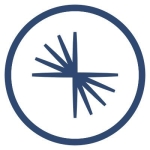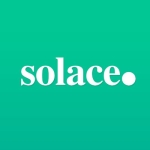What is our primary use case?
In terms of use cases, it depends of which component we're talking about, as we use three of the 4 components. The only one we don't use is the Video Streams.
Kinesis Data Stream is the module that we have been using the longest, essentially we use it to hold data which will be processed by multiple consumers. We have multiple data sources and we use Kinesis to funnel that data which is then consumed by multiple other consumers. We gather data coming from IoT devices, user phones, databases and a variety of other sources and then, as we have multiple consumers, we use Kinesis to actually gather the data and then we process it directly in Lambda, in Firehose, or in other applications.
How has it helped my organization?
Amazon Kinesis has absolutely improved our organization. Before Data Streams, we were using a couple of other solutions, including Talend and Pentaho, to move data around. Each of them were their own silos. So the ability to have one single flow of data from multiple consumers simplified our architecture a lot because you didn't need to copy or read the data multiple times, you just pull that data and then use multiple consumers. It actually simplified our architecture. It will also help us in the future when we have to build additional applications based on the same input data. We already have that data available. It will just be a matter of building the application itself. So it saves us a lot of time.
For Firehose, we perceive time-savings as a result of its incorporation. It takes you a couple of minutes to configure and it saves quite a lot of time in trying to get our information into the data lake.
Regarding Kinesis Analytics, we have real-time alarms and real-time data flows to populate other systems. For example, we populate Salesforce using a tumbling window implemented with Kinesis Data Analytics and Lambda. We also have alarms for things like knowing when someone is affecting our assets and we need to warn the operators in real-time. So Kinesis Analytics has actually given us the ability to track things in real-time that before we didn't have the ability to track.
Because we couldn't do that in the database we needed a component that had the ability to get the last window of data super quickly and if something was wrong, to notify and identify the failing record or the information that we wanted to trigger and with Lambda to notify the user. At certain points, when we had operational issues, we implemented alarms that have the key indicators to help us attack those issues before they grew and it was too late to attack them. So that has been essential for us.
What is most valuable?
I think that all Kinesis components have their own features and their own value. Starting from Data Streams, you have to have it as the data queue or else you would need to go to Kafka or another message broker (with higher implementation effort if your ecosystem is fully hosted in AWS already). I think that the solution they have put together in Kinesis is fairly easy to use. It is definitely a core component in any data architecture.
On the other hand, I find Firehose super simple and super useful for certain use cases. I wouldn't say it is as essential as Data Streams, but it is very handy if you want to just dump data. The connection between Data Streams and Firehose allows you to do that without worrying too much about performance and configuration. I find Firehose super simple to use for a very specific use case, but that use case is very common.
Kinesis Analytics is definitely more cutting edge. Out of Kinesis this is the most innovative part. We have used it for some alarms and for some batch processing in time windows. If we are talking about massive amounts of data, then you need to move to other solutions such as EMR or Glue for big data. If the amount of data is manageable and you want something to analyze on the fly, Kinesis Analytics is very appropriate and it gives you the ability to interact via SQL. So it makes your life easier if you want to develop a relatively self-contained application to do analytics on the fly.
I would say that Data Streams, in a matter of weeks, created a massive time-saving. Something that we haven't factored in is cost savings because we don't need to repeat the same data flow multiple times since each of those data flows are actually cost associated. We're talking about a couple of $100's per month, which is significant. In terms of time-savings here, we are in the scale of weeks.
What needs improvement?
In terms of what can be improved, I would say that within Data Streams, you have a variety of ways to interact with the data; you have the Kinesis client library, the KCL, and you have the Kinesis agent. When we were developing our architecture a couple years back, all the libraries to aggregate the data were very problematic. So the Kinesis Aggregator, which essentially improves the performance and cost by aggregating individual records into bigger one, is something that I found had a lot of room for improvement to make it a lot more refined. At the time I found a couple of limitations that I had to work around. So definitely on that side I found room for improvement.
Something else to mention is that we use Kinesis with Lambda a lot and the fact that you can only connect one Stream to one Lambda, I find is a limiting factor. I would definitely recommend to remove that constraint.
Buyer's Guide
Amazon Kinesis
October 2025
Learn what your peers think about Amazon Kinesis. Get advice and tips from experienced pros sharing their opinions. Updated: October 2025.
869,832 professionals have used our research since 2012.
For how long have I used the solution?
I have been using Amazon Kinesis for over 2 years.
What do I think about the stability of the solution?
Kinesis is super stable. This is one of the only few components in AWS for which we have never had any issues with the stability.
What do I think about the scalability of the solution?
Regarding scalability, you wouldn't use Kinesis Analytics for huge, vast amounts of data or for complex processing. It's for relatively simple processing with not too much data. So I wouldn't say that it is infinitely scalable, it really depends on your application and the volume of data.
Right now I don't see us using more of Kinesis. It has a very clear role in our architecture and satisfies that perfectly well. This is one of the initial components that you build. In a roadmap that would be the first 10%. All our work is spent in different actions right now, but we don't have any plans to grow Kinesis further. We used to do some specific real-time analysis with Kinesis Analytics on a case by case basis.It's more on a per need basis.
In other companies we use Kafka, but we didn't replace it with Kinesis.
How was the initial setup?
The initial setup is relatively straight forward.
In terms of the initial setup of Kinesis Streams, is no big deal, you just choose the number of streams and assign a name to your application and that's pretty much it. The effort is in the applications that talk to Kinesis. I would say implementation took around six weeks. Deployment just took two people.
We have our own internal strategy which we started from scratch. So obviously we knew which components we would be deploying first. At the time we didn't use either CloudFormation or CodeBuild. So when we started, we didn't have these tools which we now use all the time for managing the architecture and CICD. But we didn't have it in the initial deployment.
What was our ROI?
Amazon Kinesis has improved our ROI. We obviously pay monthly for Kinesis but for us it is an enabler. We wouldn't have an architecture, or we'd have a terrible architecture, if Kinesis wasn't there.
For the data analytics component, we definitely saw that our ROI clearly improved. The alarms are something that we have actually implemented in very critical tasks when we had a company issue and that we have given visibility and a prompt response to the issues thanks to Kinesis Analytics. So that has definitely proven its ROI.
What's my experience with pricing, setup cost, and licensing?
In terms of the prices, I think it is a fair price. Kinesis Data Stream has a very fair price relative to the value that it provides. Same for Firehose. As for Kinesis Analytics, I find it on the more expensive side because it's a newer component, something fewer people use, and something more innovative, cutting edge, and more specific. I would say Analytics is more on the expensive side of the spectrum. I would say that Kinesis Analytics is the only one that I may complain about if you like low pricing.
Which other solutions did I evaluate?
Kafka is comparable to Data Streams, not to Kinesis Analytics. For Analytics on the fly, I can talk about doing Spark streaming, which is a lot more complex and you need to spend a lot more time setting it up, but it also has more capability in terms of the scaling, so I wouldn't say it's a one-to-one comparison.
I also used StreamSets in the past, where you can gather data and you can also do some transformations on the fly. But again it's not comparable one-to-one so I wouldn't use it for the same use cases.
What other advice do I have?
My recommendation for Data Streams is to do a deep dive into the documentation before implementing to avoid what we did at the beginning. You try to process record by record or push record by record into Kinesis and then realize that it is not cost effective or even efficient. So you need to know that you need to aggregate your data before you push it into Kinesis. So documenting yourself about the best practices in using Kinesis is definitely something I would recommend to anyone. For Kinesis Analytics, I was actually surprised at how easy it is to use an application with such power. I would say with a trial, users will realize that for for such a fairly complex application such as Kinesis Analytics, it is something that you can do very quickly with minimal resources and it gives you a lot of value for specific use cases.
On a scale of one to ten, I would give Amazon Kinesis a nine. I don't have much to complain about Kinesis.
Which deployment model are you using for this solution?
Public Cloud
If public cloud, private cloud, or hybrid cloud, which cloud provider do you use?
Amazon Web Services (AWS)
Disclosure: My company does not have a business relationship with this vendor other than being a customer.














